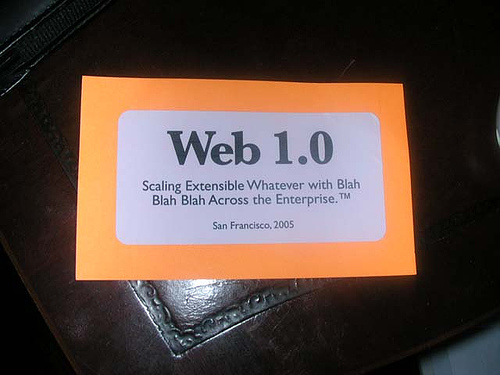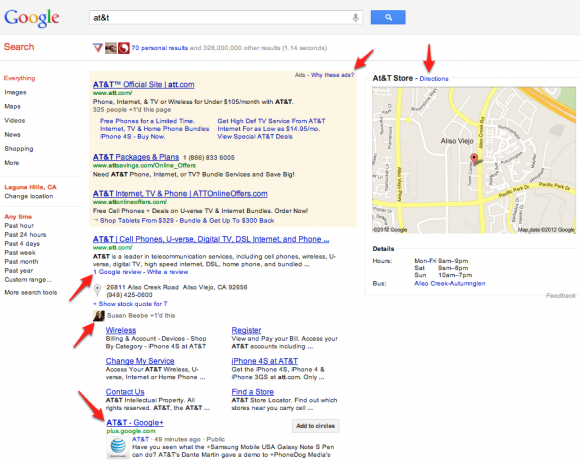A lot has been made of Klout scores lately. (update: good read from on how to fix Klout by Mark Krynsky, a funny Klout rant by Michael Sean Wright) Brands wanting to get positive word of mouth on Twitter are using the score to ID influencers that can help build buzz by sharing their experiences with their audience. Disney, Virgin America and Fox Television are just some of the brands that have tapped Klout as part of getting buzz online. The Palms Casino announced the formation of the “Klout Klub” which will use Klout to determine the type of treatment and upgrades you receive based on the amount of influence measured by the service. But brands need to be careful using Klout, because, most Klout scores are a farce.
Klout only measures the “influence” of the individual on Twitter and Facebook, and doesn’t, by definition, take into consideration the individuals true influence. Not only that, but the algorithms used by Klout to measure influence on those networks seem questionable at best. Klout scores are primarily a vanity metric, and their relevance, is at best, directional. But they definitely don’t tell the whole story, and brands that use them to deal with online influencers can find themselves blowing off people with extreme influence that just don’t calculate on the high end Klout influence score.
The problem is not that Klout is inaccurate. It’s not even that their tagline is misleading, “The Standard of Influence.” They’re a new web service after all, trying to tackle a near-impossible task of ranking every user on the social web as it relates to influence. The problem is the lack of sophistication that brands have when it comes to understanding the complex nature of influence online and connections across these networks. Klout being inaccurate is just like any other stat being inaccurate. It’s fine, until you start making business decisions based on flawed data. A brand who stakes building their reputation on Twitter using Klout as their guide is making a grave error. They’re paying attention to bad data, which can be more dangerous than no data at all.
As brands wade into the social web and look to influence conversations to the positive benefit of their business they must realize that there isn’t a tool or service that can actually do the heavy lifting for them. They need to participate, observe and (wait for it) listen to the conversations that are impacting their business. Only then can they be confident that they are reaching the true influencers that are relevant to their business.
To demonstrate the point, here are 11 people that have loads of online influence, and even tons of influence on Twitter, should they choose to use it, that have lower Klout scores than me. I’ve got a 63 as of the time of this writing. These folks all use Twitter frequently regularly, so the idea that use=influence, while flawed to the core, is even inaccurate in these cases.
On this list we have CEOs, well-known and respected authors and reporters, the founder of the largest social media organization on the planet, and the guy that started this whole social Web thing with The Cluetrain Manifesto.
Doc Searls – Klout 56 | Doc Searls’ blog
Co-Author of “The Cluetrain Manifesto”, founder of VRM, Fellow at Berkman Center for Internet and Society at Harvard, much, much more.
![doc_searls_klout Doc Searls Klout score]()
Tim Street – Klout 56 | Tim Street’s Site
Tim’s founded one of the most influential online TV series with French Maid TV, and is the leading voice in online video and content creation.
![tim_street_klout]()
Sarah Lacy – Klout 58 | Sarah Lacy’s blog
The author of two books, with writing and video credits including BusinessWeek, TechCrunch, Yahoo! and more.
![sarah_lacy_klout]()
Brett Bullington – Klout 46 | Brett Bullington’s LinkedIn profile
Respected investor, including board seats on Digg, Oodle, Next New Networks and more. Investor in Flickr.
![brett_bullington_klout]()
Kristie Wells – Klout 56 | Social Media Club
Founder of Social Media Club, the world’s largest organization of social media professionals with more than 200,000 members.
![kristie_wells_klout]()
Stephanie Agresta – Klout 49 | Stephanie Agresta’s Blog
EVP of Social Media at Weber Shandwick, and founder of TechSet, the popular event organizer at premiere social media events.
![steph_agresta_klout]()
Ryan Holmes – Klout 49 | HootSuite.com
CEO of HootSuite, one of the leading social media dashboards.
![ryan_holmes_klout]()
Cathy Brooks – Klout 55 | Cathy Brooks’ Twitter Stream
Well-respected thought leader about the impact of the social web on business.
![Cathy_brooks_klout]()
Bryan Elliott – Klout 50 | LinkedOC
Founder of Action Sports Network and LinkedOC networking groups with nearly 10,000 members. Hosts influential thought leaders in the OC with his popular events.
![bryan_elliott_klout]()
Mark “Rizzn”Hopkins– Klout 56| SiliconANGLE
Editor in Chief at SiliconAngle. Former writer for Mashable.
![rizzn_klout]()
Laurie Percival– Klout 48 | Lalawag
Founder of Lalawag, influential Los Angeles tech scene blog.
![laurie_percival_klout]()
Me
![morgan_brown_klout]()
If the Palms or any other brand decided to ignore these people while paying attention to me (or treating them differently than me,) they’d be doing a huge disservice to their business. It’s up to the strategists that are working with these companies to inform the business owners of the inaccuracy of the data, the value that they can place in it and the work they need to do to ensure that they’re reaching the people that really matter to their business – regardless of the score assigned to them by Klout.
 I’m at ad:tech this week. I just spent the last 10+ hours in a booth talking to people about online advertising. All the big online agencies are here, WPP, Digitas, TribalDDB, etc. etc. The big online players are here too, Facebook, Google, Yahoo!, etc. etc. And I’m here. A couple of weeks off of my trip to BlogWorld and New Media Expo. And to be honest, I might as well be on another planet. If BlogWorld represents the latest in social media and where the internet is going, ad:tech represents Web 1.0 and its desire to cling on to its cash cow with white knuckles.
I’m at ad:tech this week. I just spent the last 10+ hours in a booth talking to people about online advertising. All the big online agencies are here, WPP, Digitas, TribalDDB, etc. etc. The big online players are here too, Facebook, Google, Yahoo!, etc. etc. And I’m here. A couple of weeks off of my trip to BlogWorld and New Media Expo. And to be honest, I might as well be on another planet. If BlogWorld represents the latest in social media and where the internet is going, ad:tech represents Web 1.0 and its desire to cling on to its cash cow with white knuckles. I’m still working on my keynote on Building a Personal Brand for November 7th. I think I’ve come up with a framework for the talk that I’m happy with, now I just need to round it out and execute on the actual presentation. One of the things I came up with in my brainstorming for the talk was what I’m calling the “Foundation of the Personal Brand” which is based on the 4c’s (not dissimilar to the diamond industry.)
I’m still working on my keynote on Building a Personal Brand for November 7th. I think I’ve come up with a framework for the talk that I’m happy with, now I just need to round it out and execute on the actual presentation. One of the things I came up with in my brainstorming for the talk was what I’m calling the “Foundation of the Personal Brand” which is based on the 4c’s (not dissimilar to the diamond industry.)![Reblog this post [with Zemanta]](https://pmorganbrown.com/wp-content/uploads/2016/12/4b0356b0-5f91-4b4f-b020-ad06626a57ae.png)

